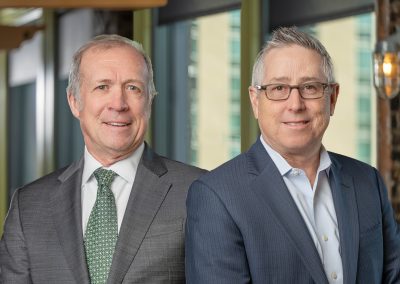Why does anyone support a charity, contact their legislator or work to better their community?
Typically, it’s because they’ve developed an emotional tie to the organization, cause or brand. Establishing and nurturing those ties in a digital world requires increasingly specialized staff members, and we’ve recently grown our team strategically to meet these new-age demands.
The need for well-crafted storytelling remains critical to our mission, but that skill needs to be married to a sharp eye for data analytics, deep branding expertise and an ability to be digitally nimble. As a firm long accustomed to coalescing people with the right skill sets around a mission, we count among our newest team members a large ad agency branding expert, a skilled consumer marketing pro and a top-level predictive analytics ace.
Their perspectives are all the more important today because consumers are bombarded with information. That’s why we invest in the talent that allows us to build impactful digital relationships for our clients.
flexibility is key for advocacy efforts to remain relevant now and in the future.

Relationship building starts with developing comprehensive data sets. Christina Patterson, our marketing analytics manager, notes that data is a driving factor for digital transformation. Previously the associate manager for analytics and insights for the marketing operations team at the Hershey Co., Christina developed data visualization platforms and analyzed $550 million in campaign spend against performance for the corporate giant.
Here, she helps move our proprietary technology to the next level of predictive analytics — accurately forecasting results for our campaigns based on our historical data, industry understanding and audience knowledge. The real-time data and analysis allow us to respond quickly and pivot effectively. Given how quickly circumstances and public opinion can change — and how rapidly those changes are amplified online — this flexibility is key for advocacy efforts to remain relevant now and in the future.

A major factor in informing that analysis — and our messaging — is the ability to ask the right questions of our data, says Charlie O’Brien, our senior digital marketing specialist. Charlie, straight from years of digital marketing in agency and in-house roles, says people look at data and ask, “What does it tell me?” That’s the wrong approach.
In the advocacy field, we determine the question we want to answer and filter data accordingly. That will help develop the right messaging because, as Charlie points out, people connect emotionally to a brand first and then backfill the reasons for the connection. Asking the right questions of your data will help uncover those connections.

That is precisely what opens the door for rich storytelling, adds our creative director, Matt Johanning, who brings more than two decades of branding and creative experience from leading teams at agencies, including 160over90, Lindsay, Stone & Briggs and Nonbox. He says leveraging data allows you to develop a high-level brand narrative that aligns with the consumer’s narrative and allows them to identify with the brand. Storytelling allows brands to communicate with people on an emotional level, align values and beliefs, and walk side by side with consumers toward a goal.
Perhaps even more important, Matt explains, combining the data, analytics and storytelling is not just how we start the conversation but how we understand where we are in the brand/consumer relationship. That lets us know the right time and place to ask the right questions of an audience. Understanding the relationship’s development is what leads to success.
While we’ve expanded our staff to help clients filter and leverage data to develop a long-lasting emotional tie with their audiences, we also know that keeping a digital-first mentality is not a specialized job — it’s everyone’s job. It’s our team effort to reach and move our audiences that allows us to lead, learn and grow today and when the PR landscape changes again in the future.




